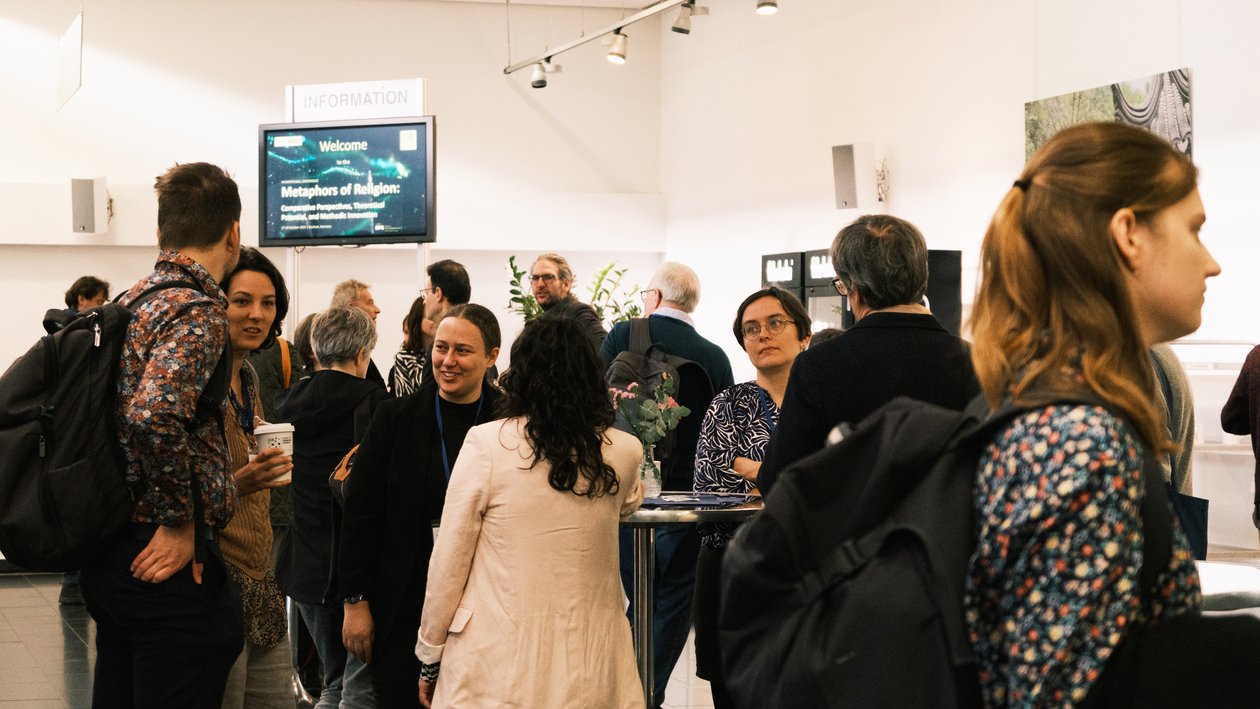
Conference Report: “Metaphors of Religion – Comparative Perspectives, Theoretical Potential, and Methodic Innovation”
Over three days, participants discussed how metaphors express the ineffable, negotiate meaning within religious communities, and transform across traditions such as Christianity, Buddhism, Islam, Daoism, and Zoroastrianism. The program offered a rich combination of philological, theoretical, and methodological perspectives, including sessions on digital corpus analysis, material culture, visual media, and the cognitive mechanisms underlying metaphorical meaning-making.
After a short video message by Ruhr University's Rector Martin Paul and the welcoming addresses by CRC Spokesperson Volkhard Krech, the conference opened with the first session on “The Potential of Metaphor,” followed by lively panels and discussions that set the tone for an engaging and interdisciplinary exchange.
Highlights included two keynote lectures: Eve Sweetser (University of California, Berkeley) offered profound insights into “Religious Metaphors, Embodiment and Multimodality,” while Gerard Steen (Vrije Universiteit Amsterdam) presented “Metaphor and Religion: How Can Deliberate Metaphor Theory Help?”, stimulating debate on the cognitive and communicative functions of metaphor in religious discourse.
The conference also featured innovative sessions on computational approaches to metaphor analysis, metaphors of life and death, spatial and movement metaphors, and the material and visual dimensions of religious imagery. Topics ranged from al-Ghazālī’s metaphors of ethical balance to the use of pictorial metaphors in Scientology, reflecting the CRC’s commitment to combining close reading with comparative and digital methodologies.
Ample opportunities for informal exchange—over coffee breaks, shared meals, and a convivial conference dinner at Brauhaus Rietkötter in Bochum’s city center—fostered a spirit of collaboration and intellectual curiosity. The concluding discussion on Wednesday afternoon synthesized the insights of the preceding days and highlighted new avenues for future research within the CRC’s framework.
The conference underscored the centrality of metaphor as both a conceptual and methodological bridge between disciplines, languages, and religious traditions. By integrating theoretical reflection with empirical analysis, the conference “Metaphors of Religion” demonstrated the vitality and interdisciplinary potential of contemporary metaphor studies.
The CRC 1475 warmly thanks all speakers, chairs, and participants for their contributions and engagement.

